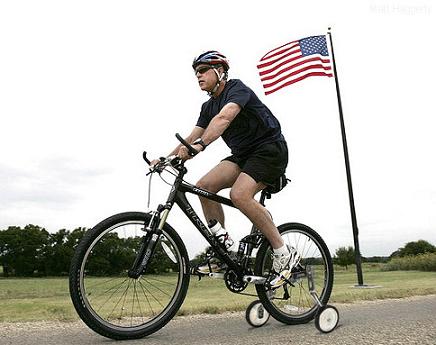Stripping Off the Training Wheels
Written by Nick Hawkes
CrossFit has really helped redefine the health and fitness industry over the past 12 years. More people than ever are getting into the gym and moving their bodies in a manner that is functional and conducive to living a fuller and more active life. It is amazing to watch these people come in, some starting at square one, and progress and push themselves. Some people, when they first join, are unable to perform some of our basic movements like pushups, pull-ups or squats. Some may think this is an issue and use the lack of ability as an excuse to avoid joining; this creates a constant negative cycle of not going to the gym because “I can’t do that”, and “I need to go to the gym because I can’t do this“. This cycle is irrelevant because, as fitness professionals, it is our job to make sure that everyone – and I mean everyone – is able to come in, workout and progress, no matter what the issue is. We take great pride in being innovative enough to create a modification for whatever the task at hand might be.
However, modifications are just that – modifications to the standard of movement. They are a means to get people moving and PROGRESSING and should not be considered the final destination. As a kid, when you were learning to ride a bike, you had training wheels; they were great, they let you ride your bike and play with the other kids. But eventually the training wheels came off and you set off to explore. Getting rid of the training wheels was a necessity and liberating, because nobody showed up to Barry’s house on Saturday morning, after watching cartoons, to ride bikes with training wheels…except for that one third grader, and nobody wanted to be him!
The point: Do not be the third grader that shows up with your training wheels still on! Some people take a little longer to remove their training wheels, and that is ok. Just make sure you are not stuck in your comfort zone and are no longer progressing. At that point the training wheels, or ‘workout modifications’, are no longer allowing you to get moving; they have become a hinderance to growth – a crutch.
Here are a few tips to help you remove your “training wheels”.
#1 – Accept that failure is ok and essential.
Just give it a try – you might surprise yourself! I was working with one of our semi-private clients a few months back and pushups were in her program. Once we reviewed her program and she went to set up, I watched her bang out a ton of modified pushups. When I inquired about why she was still modifying, she responded with the usual, “ I can’t do real pushups” and proceeded to give me a little “unmodified push back” when I encouraged her to attempt a full standard one. After her fear of failure subsided, and she attempted one, she was pleasantly surprised to realize that not only did she have the ability to do real pushups, she could do multiples at a time. Now she is kind of a pushup ninja, but would not be if she did not take the chance to fail.
#2 – Set goals and write them down.
By writing down goals and giving yourself a timeline, you are putting action to your thoughts and desires. Write them down and review them often – even share them with others in your class or with your coach. Too often people have an idea but never take any steps to achieving the idea. Putting it on paper is the first step.
#3 – Invest in private or semi-private coaching.
Perhaps all you need to start progressing is a little personalized program. Even if it is only one or two days a week that you spend with a coach, and the rest of the time is in group classes, that one session can be dedicated to focusing on your area of trouble; whether it’s pull-ups, pushups, or even single leg work to fix an imbalance. We have had success with a number of clients on one day a week semi-group coaching.
#4 – Get out of your comfort zone.
Many times people get into classes, make friends, and work with people who are all using the same modifications; same band for pull-ups, same height of bar for modified pushups, etc. This is great in the beginning, but after a time, this becomes a dreaded comfort zone. This can be a hard one, because you are all the same, you fit in and you do not want to be the one to “one up” or disrupt the comfortable balance between you and your classmates. This is understandable, but not conducive to growth and progress. Do not be afraid to challenge yourself or you will never strip the training wheels. An unlit candle can not ignite other candles, so let your light burn bright and be the one to show the way to modification freedom.
#5 – Forget about times and RX for the workout.
If the workout calls for 15 pull-ups, but all you can complete is 5 unassisted, then do your 5 and modify from there. Generally speaking, performing the movement to the full standard, even for a portion of the required repetitions, will wield better results then constantly modifying. The posted workouts are for the masses, and if you need to change reps and movements to help obtain your goals, that is fine.
Take a second to reflect; are you the third grader showing up Saturday morning with training wheels still on your bike?
